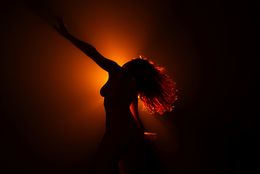Bodies in Movement - Loosen Art Gallery, Rome - Italy. │1st - 28th February 2019
When the words ‘body’ and ‘movement’ meet and match together indissolubly, it is worth mentioning and retracing at least some of the artistic experimentations occurred in Europe and beyond starting from the 19th century. Since photography was born, in 1839, it finally gave everyone the opportunity to centre his-her focus on a peculiar topic: the (human and animal) body, represented in motion, revealing its lability, mobility, natural instability. A theme that, besides being one of the emblems of the modern era, soon revealed the twofold interests of the artists: science on one side and aesthetics on the other. Since then, numerous are the examples showing how body movement became a ‘catchy’ subject, especially when shifted to the creative domain.
Among the photo-pioneers, we can count not just photographers and scientists such as Muybridge and Muray, who took chronophotographs, making the representation of movement possible.
On the verge of the 20th century, artists like the Futurists considered the body in motion as one of the keywords for their theoretical and creative research. Girl running on a Balcony, a painting by Giacomo Balla (1913), is just one of the examples one can mention. In France, more or less at the same time, Marcel Duchamp was also dealing with similar experimentations, leading to Nude descending a Staircase (1912) – without counting other eminent role models of the 19th century such as Monet, Degas or Ingres.
Read more
